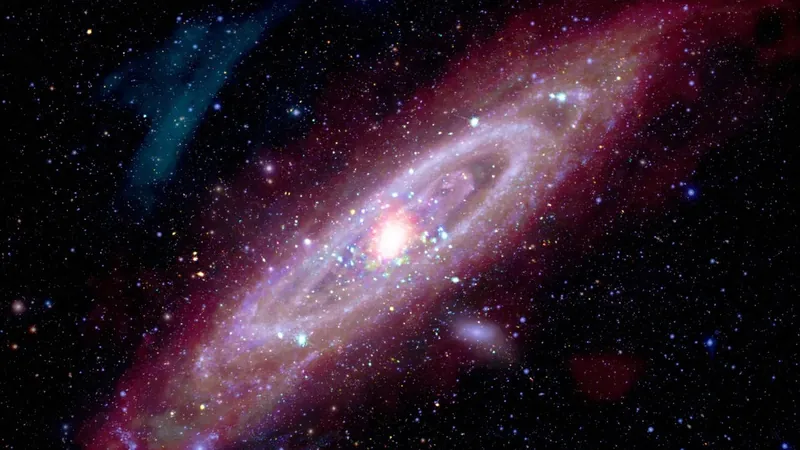
Discover the Andromeda Galaxy Like Never Before: Stunning New Images Unveiled!
2025-06-29
Author: Mei
A Breathtaking New Look at the Andromeda Galaxy
A revolutionary composite image has been released, providing a dazzling new perspective on the Andromeda Galaxy, our closest spiral galactic neighbor!
Crafted by NASA and global space collaborators, this extraordinary image merges data gathered from over a dozen telescopes and ground-based observatories, opening a window into the galaxy's enigmatic features.
Andromeda: A Celestial Wonder at 2.5 Million Light-Years Away
Located approximately 2.5 million light-years from Earth, Andromeda, also known as Messier 31, has long captivated astronomers since Edwin Hubble first observed it in 1923. With ongoing studies, researchers continue to unravel the galaxy's evolution and architecture, which remarkably mirrors that of our very own Milky Way.
Unlocking Cosmic Secrets Through Light
The innovative imagery showcasing Andromeda compiles data from X-rays observed by NASA’s Chandra telescope, the European Space Agency's XMM-Newton spacecraft, and additional missions, highlighting the unique features of this majestic galaxy.
NASA emphasizes, "Each type of light reveals new information about this close galactic relative. For instance, Chandra's X-rays uncover high-energy radiation near the supermassive black hole at the heart of M31, alongside numerous smaller, dense objects scattered throughout the galaxy."
Why Andromeda Keeps Fascinating Astronomers
Unlike the Milky Way, which is shrouded by dust and gas making it tough to observe from within, Andromeda is more accessible for study. Its clearer view grants astronomers essential insights into its structure and components.
However, despite the captivating insights from this imagery, numerous mysteries remain. Questions about the composition of elusive dark matter, its interactions with cosmic structures, and the true count of stars and planets persist.
A Galaxy of Stars and Potential Planets
Andromeda is estimated to contain hundreds of billions of stars, spurring theories that it may host trillions of planets. Yet, even with cutting-edge technology, no telescope currently exists strong enough to identify a single planet or even details of a star within its vast expanse.
The Future of Andromeda Research: An Exciting Mission Ahead!
NASA's upcoming Nancy Grace Roman Space Telescope is set to change the game. Scheduled for launch in 2027, this state-of-the-art observatory will have a field of view 100 times that of the Hubble Space Telescope, promising to reveal even more secrets of galaxies like Andromeda!


 Brasil (PT)
Brasil (PT)
 Canada (EN)
Canada (EN)
 Chile (ES)
Chile (ES)
 Česko (CS)
Česko (CS)
 대한민국 (KO)
대한민국 (KO)
 España (ES)
España (ES)
 France (FR)
France (FR)
 Hong Kong (EN)
Hong Kong (EN)
 Italia (IT)
Italia (IT)
 日本 (JA)
日本 (JA)
 Magyarország (HU)
Magyarország (HU)
 Norge (NO)
Norge (NO)
 Polska (PL)
Polska (PL)
 Schweiz (DE)
Schweiz (DE)
 Singapore (EN)
Singapore (EN)
 Sverige (SV)
Sverige (SV)
 Suomi (FI)
Suomi (FI)
 Türkiye (TR)
Türkiye (TR)
 الإمارات العربية المتحدة (AR)
الإمارات العربية المتحدة (AR)